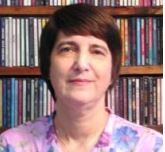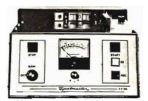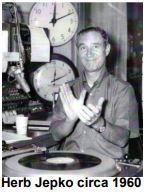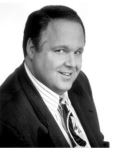Talk Radio – From Feel Good to Controversy From Local to Satellite and Beyond

[December 2018] In Part 1 of this article, Donna discussed the origins of call-in talk, the technological challenges early talk shows faced, and the gradual rule changes – such as getting rid of the annoying beep tone in 1972. The coming changes were just as great.
Before I pick up where I left off in Part 1, it is worth noting how not just the technology but the radio audience was changing, and how that affected what was on the air.
Problems on AM
In the early-to-mid-1970s, talk shows on AM were becoming increasingly more common, especially in the evening and overnight.
As WABC’s legendary Top-40 PD Rick Sklar told the New York Times in 1982, “Music on AM is doomed…Talk and information is the obvious solution.”
There was a good reason for this: AM stations were noticing demographic shifts, so the program directors tried to retune their formats find a better niche for their stations. The 1970s was the decade when younger listeners were moving over to the FM band for music; Baby Boomer kids were now in their early twenties and many no longer related to the fast-talking AM Top-40 deejays of their youth (plus they also did not like the 18-20 min-utes of commercials on the stations they grew up with).
Although some cities still did not yet have wide FM penetration in the early 70s, listeners who owned an FM radio knew where to find the newest formats. One was “progressive rock” (later known as album rock): unlike AM Top-40, FM rock stations played the long version of the songs and did not talk over the intro.
There were also other popular FM formats, like urban contemporary: Black Top-40, which often included some jazz and Rhythm & Blues in addition to the hits; and Beautiful Music (derisively called “elevator music”), it often got excellent ratings, thanks to the many businesses that kept it on during the workday.
Finding the Right Niche
AM needed to find new ways to compete.
Rick Sklar noted older listeners were seeking news and information along with some music. Thus, for many stations, “full-service” formats, a combination of music (usually adult contemporary hits), sports, news – and talk – became a good option.
This was not an entirely new idea. Beginning in the 1950s, a few AM stations had been successful with hybrid formats, targeted to the 35-54 year old demographic. These stations played adult contemporary music (then called Middle-of-the-Road) along with talk segments hosted by well-known entertainers or local celebrities.
Talk Stars
One good example was New York’s WOR, with programs hosted by actress Arlene Francis, husband and wife team Tex McCrary and Jinx Falkenberg, and others.
Most of these programs featured the hosts talking in studio with guests – often famous singers or actors or authors, who were in town and happy to get some free publicity.
Among the WOR hosts with the most loyal following was raconteur Jean Shepherd. His fans called him “Shep,” and he was a story-teller par excellence. His ability to improvise and his gift for painting a picture with words appealed to people of all ages.
In fact, one of Shepherd’s most loyal fans was a twelve-year-old named Donald Fagen, who would later become the co-founder and lead singer of the rock band Steely Dan.
As he told Slate Magazine in 2015, you could never predict what Shepherd would do – sometimes he was remembering incidents from the neighborhood where he grew up or talking about his days in the military or sharing anecdotes about his career. “He seem[ed] to have done every possible job, from engineer to sportscaster to hosting live cowboy music broadcasts,” Fagen recalled.
Shepherd sometimes sang along with the music he played, or made jokes about the comercials. He was a true personality, and listeners loved him.
Host of Off-Beat Guests
Another popular (and equally unique) talk host was overnight talker “Long John” Nebel, a favorite of insomniacs and “night people” for several decades.
Nebel’s specialty was off-beat guests – such as people who claimed to be from outer space or who believed they had lived many past lives.
But Nebel’s show was more than a source for weirdness. He too was a story-teller who could make an everyday event like trying to return an item to the store into a fascinating (and humorous) tale. His biographer, Donald Bain, referred to Nebel as a “showman,” a “hustler,” and at times, even a “charlatan.” But however you described Nebel, his audience was fanatically loyal to him.
When he died in 1978, Dennis Israel, a general manager who had worked with him, said:
“There will never be another Long John Nebel. It’s an era that went away.”
As I mentioned in Part 1, many talk show hosts of that era did not put callers on the air live, due in part to technological problems, as well as the mandatory beep-tone.
Essentially hosts feared callers might use bad language and put the station’s license in jeopardy. Hence, many announcers continued the practice of simply re-stating what the caller had said – but that was less than ideal.
Tape Delay Changes Things
It may never be known exactly who invented the very first tape-delay.
Nebel’s engineer, Russell Tinklepaugh, devised a tape-delay system that permitted airing calls in a manner that seemed live to the audience, while giving him a few seconds to listen to the call and take it off the air if necessary.
The invention described in a 1977 newspaper article by reporter Tom Tiede, about the history of call-in talk shows: “[Tinklepaugh] hooked incoming telephone calls to a playback recorder located across the studio room. By the time the phone voice traveled this distance for airing, there was a seven-second delay…”
A former colleague of Tinklepaugh’s providing a more in-depth description for a Wikipedia article about Nebel. “[Russell] built a modified Ampex 300 tape deck with an additional set of heads. The deck was able to record on a loop of 1/4″ tape and carry the tape around the perimeter of the deck to be played on the second set of heads.”
Other Delay Solutions
Some sources claim it was (Carmine) Frank Cordaro, chief engineer of station WKAP in Allentown PA.
His invention was put to good use by station announcer Vern Craig in the early 1950s. There are undoubtedly other engineers in other cities who experimented with other ways to put callers on the air, as Cordaro and Tinklepaugh did.
 Spotmaster, makers of cartridge tape machines, used very short cartridges (usually 7 seconds) and an inverted head alignment (play – erase – record) to permit audio delays in a smaller form.
Spotmaster, makers of cartridge tape machines, used very short cartridges (usually 7 seconds) and an inverted head alignment (play – erase – record) to permit audio delays in a smaller form.
Talk show hosts were now quite happy with the eliminated beep-tone and further improvements in the tape-delay technology (leading all the way up to the to the digital delay systems of the 1980s and beyond), which made putting callers on the air much less stressful.
Comfort From Coast to Coast
As local talk and information became less of an exception and more of a viable option for AM radio, another change that affected talk radio occurred in the mid-1970s – the format went national.
It all began in November 1975, when veteran announcer Herb Jepko, a Salt Lake City favorite, was hired to take his late-night local talk show national on the Mutual Radio Network.

This was the first time a pure talk show was heard from coast to coast – Herb Jepko’s Nitecap Show now aired on over 100 Mutual stations.
His program was never about hot-button issues, and in fact, they were forbidden. He had established a reputation as a genial, empathetic host who was like a best friend to his audience.
Jepko enjoyed chatting with his listeners about everything from gardening to travel to favorite poems or recipes. He also encouraged his listeners to do good deeds in the community.
Critics found his show corny – a throwback to the 1940s – but his loyal fans adored him and called in faithfully, night after night.
Less Comfort, More Issues
The choice of Jepko was interesting, since he was unlike most every talk show host to come.
Increasingly, talk radio was becoming more focused on confrontational and controversial hosts with distinct points of view.
Prime examples were hosts like Los Angeles-based Bill Ballance, who talked about sex; or veteran New York talk host Barry Gray, described by newspaper critics as “brash and opinionated.” Hosts were more concerned to keep listeners engaged – and listening to the commercials – than talk them to sleep.
But Jepko had been the polar opposite.
What’s the Question?
When Mutual canceled Jepko’s program in late May 1977, his listeners were outraged.
However, Mutual executives decided they could get a larger (and younger) audience with a different, more dynamic host, so Jepko was out.
The time-slot first went to Long John Nebel, but in early 1978 it was given to Larry King, then a Miami-based talker – and friend of Mutual’s new President. King went on to become big, thanks in large part to the success of his overnight Mutual talk show – live Monday through Friday and taped highlights on week-ends.
More Talk Friendly Regulation
The 1980s were the decade of radio deregulation – and talk radio was a true beneficiary.
FCC policies then ended the public service programming requirements, the 3rd Class Radiotelephone licenses, and, perhaps most importantly, the Fairness Doctrine.
 The FCC’s decision opened the door for one-sided or partisan programming, such as the soon-to-be-popular conservative talker Rush Limbaugh, whose syndicated program brought excellent ratings to many AM stations.
The FCC’s decision opened the door for one-sided or partisan programming, such as the soon-to-be-popular conservative talker Rush Limbaugh, whose syndicated program brought excellent ratings to many AM stations.
The 1980s also saw even more expansion of national talk shows. In late 1981, NBC debuted a nationally-syndicated talk show format. When NBC Talknet began, it only aired talk shows from 10 PM to 5 AM Monday through Friday.
Soon, positive responses from listeners and advertisers encouraged NBC to expand the format to live weekend night talk shows beginning in April 1982.
By 1985, Talknet was offering talk shows on 245 affiliates from 7 PM to 7 AM. Among the popular personalities were Bruce Williams, an business expert, who offered personal financial advice, and Sally Jessy Raphael, who gave advice and encouragement on personal matters.
ABC Joins Talk Format
In May 1982, the ABC Radio Network launched its own talk format.
Originally, ABC Talkradio featured six talk shows, most of the personalities were already on the air at KABC in Los Angeles: Owen Spann, Dr. Irene Kassorla, Toni Grant, Michael Jackson (a British talker, not the Rock Star), Ray Briem, and Ira Fistell.
Affiliates could take some of the shows – or take them all, depending on their needs. Each host tried to take a slightly different approach. Several hosts talked about current events – Jackson was liberal, while Briem was conservative. A later addition, psychologist Toni Grant, who gave advice about relationship problems, was especially popular.
While each show tried to have interesting guests, not all the hosts allowed listeners to call in all the time. You might remember one concern for the early national talk shows was that long-distance phone calls were still very expensive.
Since Talkradio was based on the West coast, it offered an 800-number for listeners to call, as NBC (based in New York) did, too.
As one might expect, both networks had various personnel changes, as some talk hosts left, and others were added. For example, Dr. Susan Forward joined ABC Talkradio in 1983, and Dr. Dean Edell debuted there in 1985.
Sports Talk is a Hit
There had been Sports Talk programs on radio since the 1920s.
Some were hosted by former players and others by the station’s play-by-play announcer. They tended to avoid letting listeners call in, and featured guests (including players) talking to the host.
However, as syndication spread throughout the 1970s and 1980s, sports talk shows were able to reach larger audiences than ever before possible, and fans nationwide could now talk sports with the hosts.
There were efforts to create an all Sports Talk network. Among the earliest was the Enterprise Radio Network, which operated for about eight months in 1981 before running out of money.
Far more successful was ESPN Radio, which was founded in Bristol, Connecticut in September 1991 and is still doing well, providing a combination of sports play-by-play along with high-profile talk show hosts.
By the mid-1990s, one of its popular personalities was a woman, Nanci Donnellan, better known as “The Fabulous Sports Babe.”
In the 1980s the growth of Sports Talk as a format turned out to be a life-saver for many local AM stations. This was also a time when a new generation of personality announcers made their presence felt.
Among them was Jim Rome, host of “The Jungle,” a mid-day Sports Talk program, which debuted on San Diego’s XETRA in 1990, and was also heard in Los Angeles.
Rome was sarcastic, outspoken, and high-energy. He attracted an audience of fans who were as passionate about sports as he was. XETRA did so well with his program that it soon built more sports talk shows around him.
Ladies Could Talk, Too
Years ago, women announcers had generally been relegated to hosting so-called “Women’s shows,” which featured recipes, household tips, fashion, and other topics believed to be interesting to stay-at-home moms.
In the 1980s, some women started to carve out a niche as celebrity interviewers or advice-givers – even though society was changing, shows that focused on relationship advice remained popular. In addition to announcers like Toni Grant and Sally Jessy Raphael, several other women were doing well in the advice-giving genre.
One was Dr. Laura Schlessinger. Her radio career had begun in the mid-1970s, but her visibility was raised in the late 1980s and early 1990s when she began filling in for Sally Jessy Raphael on ABC Radio, giving her trademark relationship advice to callers.
Sex and Politics
Yet another female host gaining national attention was Dr. Ruth Westheimer, whose radio career began in New York with a local program called “Sexually Speaking.”
Contrary to its title, the show was not provocative: Dr. Ruth offered common-sense advice about sex education. People loved her personality (and her German accent), and the show was so successful that NBC began carrying it nationwide in the mid-1980s.
Women were also breaking into talk radio in areas other than advice-giving. Political talk had been almost entirely male, but beginning in the 1990s, that gradually began to change. On the liberal side, Randi Rhodes, and later, Stephanie Miller became successful, while Laura Ingraham gained popularity with conservatives.
In addition, more women were serving as news reporters, and being asked to discuss the issues on news programs.
A good example was April Ryan, who came from Black radio. She became the White House correspondent for the American Urban Radio Network in 1997, after serving as news director for a Baltimore radio station.
Delivery Changes
Throughout this period of time, a growing number of network programs began to be delivered via satellite.
Making use of satellites had been possible as far back as the late 1970’s. On television, PBS was the first network to do so in 1978, using Westar to send feeds to 280 public television stations. National Public Radio followed soon after that, utilizing satellite in 1979.
At first, the satellite programs were analog, but this changed in 1982, when ABC and NBC moved to the Digital Audio Transmission System (DATS).
A further improvement occurred in 1991, when Spectrum Efficient Digital Audio Transmission (SEDAT) became available; this distribution system lasted until 2001.
Leaving Terra Behind
Another change in delivering entire formatted “stations” of digital audio broadcasting came from space – and idea which initially encountered considerable skepticism.
It was originally proposed in 1989 by entrepreneur Martin (today Martine) Rothblatt, chief executive officer of what was then called Satellite CD Radio, a company subsequently became Sirius Satellite Radio.
In 1992, the FCC finally agreed to allocate a spectrum in the “S” band (2.3 GHz) for nationwide satellite-based broadcasting, a decision the National Association of Broadcasters opposed (they believed that satellite broadcasts could further erode listenership to local terrestrial stations).
However, it would not be until the late 1990s that satellite radio was ready to launch, and the first broadcasts did not occur until XM Satellite Radio began operations on September 25, 2001.
Ultimately, in 2008, after merging with its competitor XM Satellite Radio, took the name Sirius XM Radio.
All Kinds of Talk
Today, satellite radio listeners can hear numerous formats of their choice.
In addition to new and classic music formats, there are many talk formats, including Sports Talk, Entertainment/Celebrity Talk, News/Talk, Religious Talk, and Political Talk – there are Conservative channels, Liberal channels, and channels that try to be neutral.
Furthermore, subscribers to Sirius/XM can also hear the audio signal of cable TV stations like Fox News, CNN, and MSNBC.
And More Talk
As media theorist Neil Postman could have told the NAB, a new medium (in this case, satellite or Internet) seldom erases an older medium (like terrestrial radio).
Instead, there is greater competition, and the media landscape simply expands to include more choices for the audience.
In many cities, listeners still support their favorite local radio talk hosts, while also enjoying the ones they can hear nationally syndicated on the networks or delivered to them via satellite.
Furthermore, many talk shows are now delivered via Internet podcast, which allows fans to listen to the program at a time of their own choosing, from their phone or laptop or tablet, from most anywhere on the planet.
Talk radio has proved to be a popular format, whether delivered on a local terrestrial station or via satellite or Internet. Further advances in technology have been proposed but few of us can predict exactly how talk radio will be delivered in the future.
But one thing is certain: for as long as there are issues that the public wants to discuss, this format will continue to remain viable.
– – –
Donna L. Halper, PhD is an associate professor of Communication and Media Studies at Lesley University, Cambridge MA. She is the author of six books and many articles, a radio consultant, and a former broadcaster.
Her website is: www.donnahalper.com
controversy, history, local, profiles, satellite, talk radio
